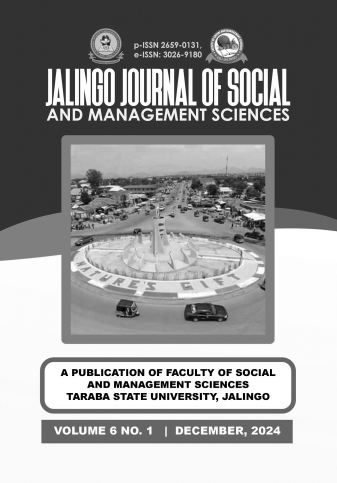Comparative Analysis of Particulate Matter (PM 2.5 and PM10) Pollutant levels between Low-Income and High-Income Residential Areas in Yola Metropolis, Adamawa State, Nigeria
Keywords:
Cooking fuels, Environment Indoor Pollutants concentration, High-Income Residential Buildings & Low-Income Residential BuildingsAbstract
Many households using solid fuels burn them in open fires or simple stoves that release most of the smoke into the home. The effect this has on them is the release of pollutants into their houses which is detrimental to health. Particulate Matter2.5 and Particulate Matter10 were collected in four buildings each at Low-Income residential area and High-Income residential area in Yola metropolis. The low-income residential area was Zango at Limawa ward while the high-income residential was army barracks road. The data collected in February 2024 were done when cooking was happening and when cooking was not happening, and analysis showed higher pollutant concentration in low-income residential buildings. This was primarily due to the type of cooking fuel (coal) used at the low-income residential buildings while at high-income residential buildings, the usage of cooking gas was observed. Considering PM2.5, The mean value at Gas House (during cooking time) which was at 7.2 ug/M3 was lesser than Coal house (when not cooking) which was 7.6ug/M3. This clearly shows there is higher concentration of PM2.5 at coal fuelled building than Gas fuelled building. Moreover, the maximum concentration value of PM2.5 was 25ug/M3 at Coal fuelled building while it was 9ug/M3 at Gas fuelled building which is even lesser than the value of 11ug/M3 measured when cooking was not ongoing at coal fuelled building. PM10 also showed the same pattern where the mean value was as high as 42.03ug/M3 at Coal fuelled building while cooking but 14.8ug/M3
at Gas fuelled building while cooking which was just 35% of that of coal fuelled building while cooking. The maximum concentration of PM10 at the Coal fuelled building was 59ug/M3 during the cooking period while 20ug/M3 with Gas fuelled also during the cooking
period. This clearly shows that there is higher PM concentration at the low-income residential buildings, and this was due to the fuel used in cooking. Hence, the study recommends that there is a need to educate the residents of low-income communities on the health implication of the type of fuel they use; the government should also help provide cleaner fuel for the people of the community. This will go a long way to improve the air quality of their environment.

Downloads
Published
Issue
Section
License
Copyright (c) 2024 JALINGO JOURNAL OF SOCIAL AND MANAGEMENT SCIENCES

This work is licensed under a Creative Commons Attribution-NonCommercial 4.0 International License.
